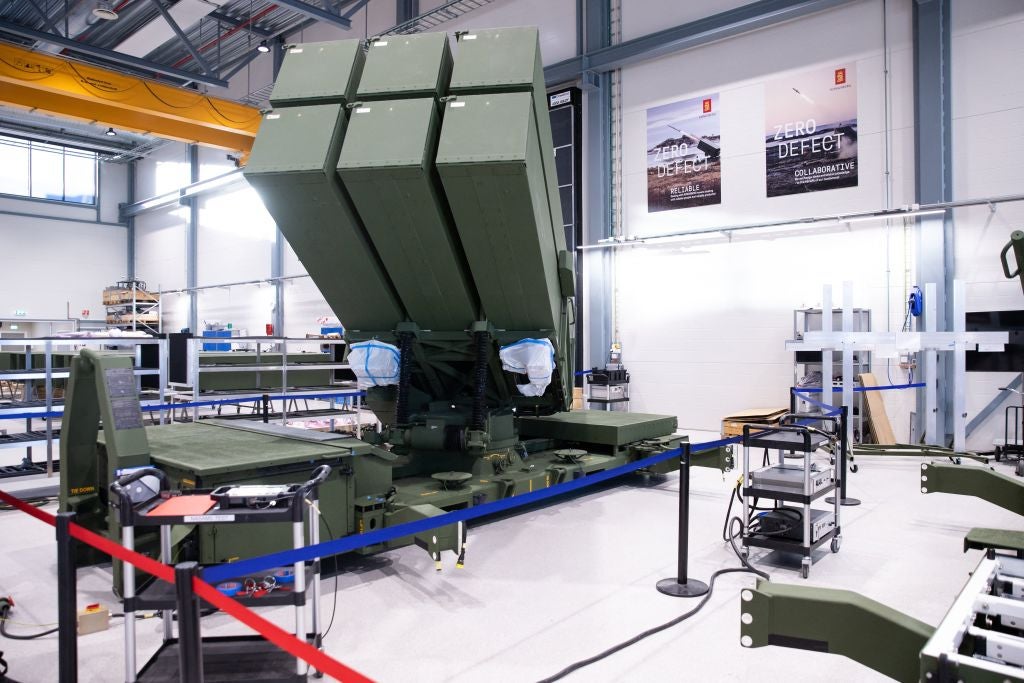
In a bid to bolster air defence in the Baltic region, Nato has brought online the Norwegian advanced surface-to-air missile system (NASAMS) after deploying more than 100 Spanish soldiers to the Lielvarde Air Base in Latvia. Latvia’s air defence capabilities will now be improved with the addition of medium-range air defence capabilities from the Spanish contingent.
The recent deployment of the NASAMS, in conjunction with Spanish troops, is set to improve the air defence capabilities of not only the host country, but also the Baltic region, thereby enhancing the overall air defence network of Nato allies.
The Spanish NASAMS air defence system has been deployed to Lielvarde Air Base in Latvia, combined into Nato’s integrated air and missile defence system through the Latvian control and reporting centre. This integration enables the system to support air surveillance and control of Nato airspace in the region.
“The deployment of the Spanish NASAMS medium-range air defence system in Latvia will augment NATO’s airspace surveillance and control in the Baltic region”
Tushar Sudesh Mangure, defence and aerospace analyst at GlobalData
With the addition of the NASAMS, Latvia’s air defence capabilities will be improved to effectively detect and engage a diverse array of threats such as aircraft, missiles, and drones. Latvian forces have already been operating short-range air defence systems, and the addition of NASAMS will complement these existing systems.
This deployment is the fourth that Spain has had of this kind outside of its territory, with NASAMS batteries also stationed in Gran Canaria, Cartagena, and earlier this month a system arrived in Estonia.
As recently as March 2023, Norway also delivered a pair of NASAMS to Ukraine to assist in the defence against the Russian invasion.
“The deployment of the Spanish NASAMS medium-range air defence system in Latvia will augment NATO’s airspace surveillance and control in the Baltic region”, said Tushar Sudesh Mangure, defence and aerospace analyst at GlobalData, adding that the evolving regional threat scenario has encouraged Latvia and Estonia to sign a letter of intent for the joint procurement of medium-range air defence systems. “Until the delivery of new systems, the Spanish NASAMS will provide an extra layer of protection from a wide range of threats, including UAVs, missiles, helicopters, and aircraft.”
The NASAMS air defence system employed by Spain uses four firing units, each armed with three missile launchers, equipped with six of Raytheon’s Amraam 120 C5 beyond-visual-range air-to-air missiles. These missiles have an operational altitude of up to 10km and a range 25km. The MPQ-64 Sentinel radar that supports the NASAMS system detects incoming aircraft at a range of up to 75km.
Joint NASAMS exercises for Spanish and Latvian operators
In a bid to enhance the coordination and efficiency of standardised protocols, soldiers have joined forces with their Latvian counterparts to strengthen interoperability among Nato armies.
Spanish soldiers are set to collaborate with Latvian air defence forces to enhance the overall efficiency of Nato’s air defence capabilities in the region. A series of exercises are set to take place with the aim of enhancing coordination and cooperation among Nato member countries.
“This joint effort between Nato members not only strengthens our collective defence, but also highlights the deep partnership and loyalty bonds that exist between our nations. Together, we stand committed to upholding our shared values of security, stability, and freedom,” said Major Antonio Izquierdo Aroca, Commander of the NASAMS Unit.
The exercises aim to not only pinpoint areas for improvement but also to guarantee the seamless collaboration of all Nato forces in case of an emergency. The upcoming joint training and exercises are expected to enhance the cohesion among Nato members and bolster the Alliance’s preparedness.
According to GlobalData’s “Global Missiles & Missile Defense Systems Market Forecast 2022-2032“, the European region is anticipated to cumulatively spend approximately $82bn on the procurement of Missile Defense Systems from 2022 to 2032.







